This is all about your tone of voice and how you communicate with your customers. The language you use and how you phrase what you’re saying is also paramount.
The starting point is identifying your values. What do you stand for as a company and what do you want your customers to know you for? It would be great if you could distil these down to three keywords, but that can be hard to do.
Here are some examples of brands that have identified their core values.
Barclays Bank identifies respect, integrity, service, excellence and stewardship as its core values. Each has a short qualifying sentence underneath.
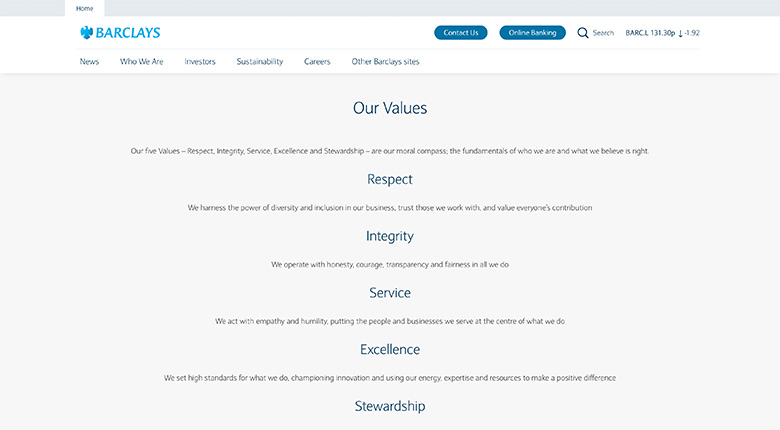
Cunard has defined its values in more detail, describing how they want their customers to be treated and what they want them to feel.
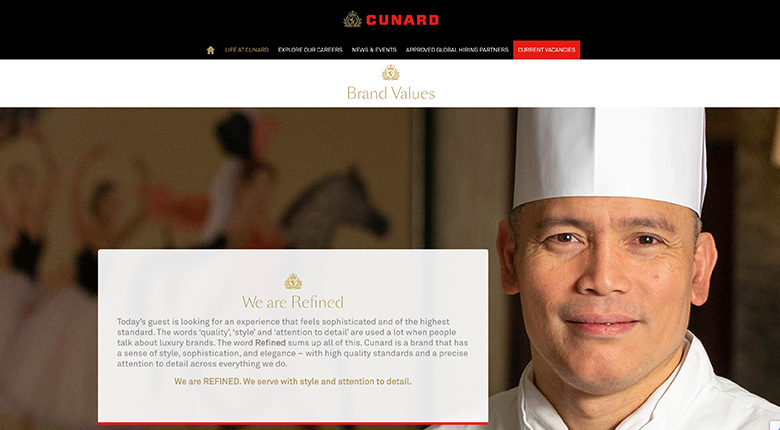
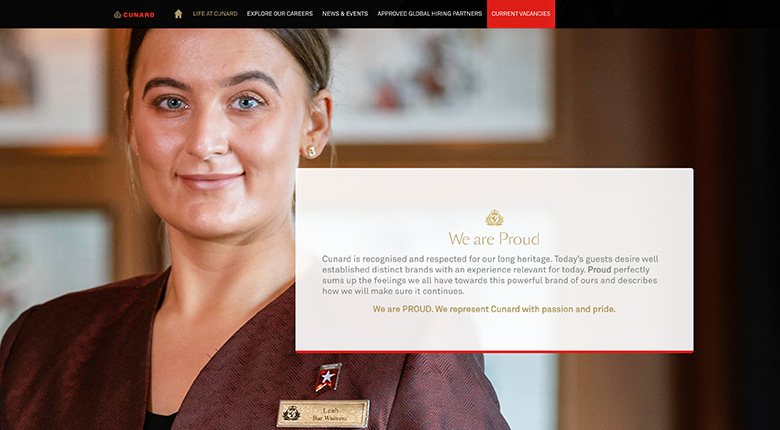
This demonstrates a depth of customer understanding from Cunard, which is a great place for you to start.
You should know your target audience
There is a common theme here and it keeps coming up. Everything we do around content starts with understanding your target audience. If you don’t have this, it’s quite difficult to produce quality content. But what sort of things do you need to know?
It sounds a bit cliché but it’s all about getting under the skin of your customers. You need a questioning mind to find out what is important to them.
Think about communicating with your audience. What are their goals, aspirations, motivations and perceptions? What is it you do that would interest them? How are you making their lives better through your product or service?
Focus on your tangible benefits and describe them in a way that resonates with your audience. Cunard is a good example to demonstrate how this works. The description of their values is relatively detailed.
Your values give you an authentic brand voice
You can now start to create your tone of voice, something authentic that resonates with your audience.
By building a detailed understanding of your audience you can use the language and phrases they would recognise. You are in a position to be able to empathise with their situation and talk to them at the right level.
A great example here is the Mailchimp Content Style Guide. Their audience is SMEs who are using the tool to deliver their marketing campaigns. It needs to be very straightforward and easy to use.
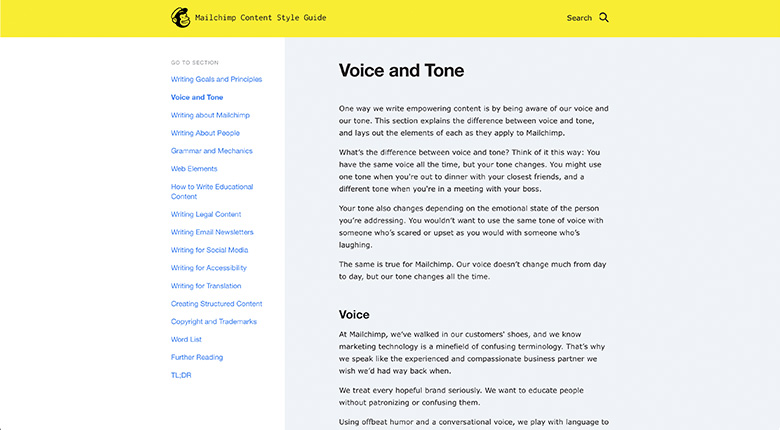
They explain ‘voice and tone’ in simple, clear language which is exactly what they set out to do. The guide is laid out logically and in such a way it encourages companies to write their own.
There is also something in here about consistency when you’re writing. Certain words can be written slightly differently. But only make very subtle changes, as it’s important to do it the same way every time because that is a reflection of your brand.
For example, is it ‘internet or Internet’, ‘cashflow or cash flow’, or ‘Wifi or WiFi’? These important little details will contribute to your overall tone of voice.
You should be focused on the outcome
Another factor that contributes to your tone of voice is the ‘so what’ factor. The true test is to answer what’s in it for your customers because that’s all they are interested in. If you don’t present the outcome to your audience then they will not see the benefit.
You read about it all the time – how great a company is, their entire family history, or a detailed description of how a product has been built. The truth is, your audience doesn’t care. They don’t want to hear about you – just what ‘you’ can do for them.
While it’s fine to give a bit of background, you do need to talk about what your product or service can do for your audience. How does it make their life easier? What problem does it solve? Is it something of a luxury item – a bit of indulgence?
The next step is to use language to describe it to them, by using adjectives and active phrases that will bring everything to life. Which words you choose and how you deliver them will depend on your tone of voice.
Let’s go back to our Cunard example. This is how they describe one of their most famous cruise ships:
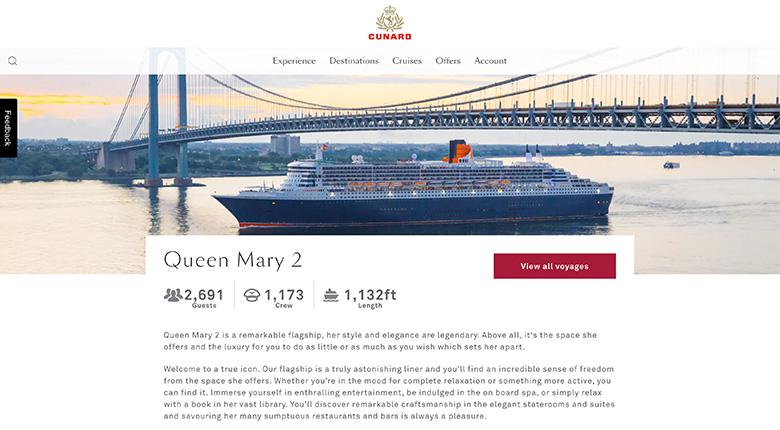
A sumptuous style of language is used that builds a picture in your mind. It reflects their brand values of refined, thoughtful, charismatic and proud.
You’re talking to an individual and not the masses
Always remember you should not overuse ‘us’ and ‘we’ when you are writing. Again, this is something else you see quite a lot on websites and in brochures. If you’ve been following up to now, you will know that your audience doesn’t care about you.
Your customers should be at the centre of all your content, which is why you need to talk directly to them in a tone they will appreciate. It should be at the heart of your brand voice and needs to resonate with them.
And just a note of caution – if you’re going through an exercise that defines your tone of voice, make sure it doesn’t simply reflect what the company believes is right. This is a good way to detach your offering from your audience.
You need to talk to customers to understand how you should be positioning yourself. If your brand values don’t connect you to your audience, you will fail to meet their needs in everything you deliver.



